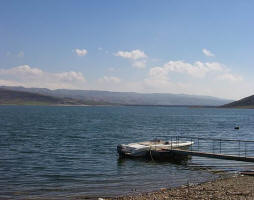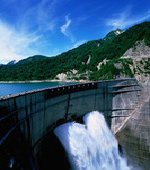 The Other Arab Spring
The Other Arab Spring
ISN’T it interesting that the Arab awakening began in Tunisia with a fruit vendor who was harassed by police for not having a permit to sell food — just at the moment when world food prices hit record highs? And that it began in Syria with farmers in the southern village of Dara’a, who were demanding the right to buy and sell land near the border, without having to get permission from corrupt security officials? And that it was spurred on in Yemen — the first country in the world expected to run out of water — by a list of grievances against an incompetent government, among the biggest of which was that top officials were digging water wells in their own backyards at a time when the government was supposed to be preventing such water wildcatting? As Abdelsalam Razzaz, the minister of water in Yemen’s new government, told Reuters last week: “The officials themselves have traditionally been the most aggressive well diggers. Nearly every minister had a well dug in his house.”
All these tensions over land, water and food are telling us something: The Arab awakening was driven not only by political and economic stresses, but, less visibly, by environmental, population and climate stresses as well. If we focus only on the former and not the latter, we will never be able to help stabilize these societies.
Take Syria. “Syria’s current social unrest is, in the most direct sense, a reaction to a brutal and out-of-touch regime,” write Francesco Femia and Caitlin Werrell, in a report for their Center for Climate and Security in Washington. “However, that’s not the whole story. The past few years have seen a number of significant social, economic, environmental and climatic changes in Syria that have eroded the social contract between citizen and government. ... If the international community and future policy makers in Syria are to address and resolve the drivers of unrest in the country, these changes will have to be better explored.”
From 2006-11, they note, up to 60 percent of Syria’s land experienced one of the worst droughts and most severe set of crop failures in its history. “According to a special case study from last year’s Global Assessment Report on Disaster Risk Reduction, of the most vulnerable Syrians dependent on agriculture, particularly in the northeast governorate of Hassakeh (but also in the south), ‘nearly 75 percent ... suffered total crop failure.’ Herders in the northeast lost around 85 percent of their livestock, affecting 1.3 million people.” The United Nations reported that more than 800,000 Syrians had their livelihoods wiped out by these droughts, and many were forced to move to the cities to find work — adding to the burdens of already incompetent government.
“If climate projections stay on their current path, the drought situation in North Africa and the Middle East is going to get progressively worse, and you will end up witnessing cycle after cycle of instability that may be the impetus for future authoritarian responses,” argues Femia. “There are a few ways that the U.S. can be on the right side of history in the Arab world. One is to enthusiastically and robustly support democratic movements.” The other is to invest in climate-adaptive infrastructure and improvements in water management — to make these countries more resilient in an age of disruptive climate change.
An analysis by the U.S. National Oceanic and Atmospheric Administration, published last October in the Journal of Climate, and cited on Joe Romm’s blog, climateprogress.org, found that droughts in wintertime in the Middle East — when the region traditionally gets most of its rainfall to replenish aquifers — are increasing, and human-caused climate change is partly responsible.
“The magnitude and frequency of the drying that has occurred is too great to be explained by natural variability alone,” noted Martin Hoerling, of NOAA’s Earth System Research Laboratory, the lead author of the paper. “This is not encouraging news for a region that already experiences water stress, because it implies natural variability alone is unlikely to return the region’s climate to normal.”
Especially when you consider the other stresses. Nafeez Mosaddeq Ahmed, the executive director of the Institute for Policy Research and Development in London, writing in The Beirut Daily Star in February, pointed out that 12 of the world’s 15 most water-scarce countries — Algeria, Libya, Tunisia, Jordan, Qatar, Saudi Arabia, Yemen, Oman, the United Arab Emirates, Kuwait, Bahrain, Israel and Palestine — are in the Middle East, and after three decades of explosive population growth these countries are “set to dramatically worsen their predicament. Although birth rates are falling, one-third of the overall population is below 15 years old, and large numbers of young women are reaching reproductive age, or soon will be.” A British Defense Ministry study, he added, “has projected that by 2030 the population of the Middle East will increase by 132 percent — generating an unprecedented ‘youth bulge.’ ”
And a lot more mouths to feed with less water than ever. As Lester Brown, the president of the Earth Policy Institute and author of “World on the Edge,” notes, 20 years ago, using oil-drilling technology, the Saudis tapped into an aquifer far below the desert to produce irrigated wheat, making themselves self-sufficient. But now almost all that water is gone, and Saudi wheat production is, too. So the Saudis are investing in farm land in Ethiopia and Sudan, but that means they will draw more Nile water for irrigation away from Egypt, whose agriculture-rich Nile Delta is already vulnerable to any sea level rise and saltwater intrusion.
If you ask “what are the real threats to our security today,” said Brown, “at the top of the list would be climate change, population growth, water shortages, rising food prices and the number of failing states in the world. As that list grows, how many failed states before we have a failing global civilization, and everything begins to unravel?”
Hopefully, we won’t go there. But, then, we should all remember that quote attributed to Leon Trotsky: “You may not be interested in war, but war is interested in you.” Well, you may not be interested in climate change, but climate change is interested in you.
Folks, this is not a hoax. We and the Arabs need to figure out — and fast — more ways to partner to mitigate the environmental threats where we can and to build greater resiliency against those where we can’t. Twenty years from now, this could be all that we’re talking about.
| Contact information |
Thomas L. Friedman
|
|---|---|
| News type | Inbrief |
| File link |
http://www.nytimes.com/2012/04/08/opinion/sunday/friedman-the-other-arab-spring.html?_r=4&pagewanted=all&fb_source=message |
| Source of information | NYtimes |
| Subject(s) | AGRICULTURE , ANALYSIS AND TESTS , CHARACTERISTICAL PARAMETERS OF WATERS AND SLUDGES , DRINKING WATER , DRINKING WATER AND SANITATION : COMMON PROCESSES OF PURIFICATION AND TREATMENT , ENERGY , FINANCE-ECONOMY , HEALTH - HYGIENE - PATHOGENIC MICROORGANISM , HYDRAULICS - HYDROLOGY , INDUSTRY , INFORMATION - COMPUTER SCIENCES , INFRASTRUCTURES , MEASUREMENTS AND INSTRUMENTATION , METHTODOLOGY - STATISTICS - DECISION AID , NATURAL MEDIUM , POLICY-WATER POLICY AND WATER MANAGEMENT , PREVENTION AND NUISANCES POLLUTION , RIGHT , RISKS AND CLIMATOLOGY , SANITATION -STRICT PURIFICATION PROCESSES , SLUDGES , TOOL TERMS , TOURISM - SPORT - HOBBIES , WATER DEMAND , WATER QUALITY |
| Geographical coverage | Algeria, Libya, Tunisia, Jordan, Qatar, Saudi Arabia, Yemen, Oman, United Arab Emirates, Kuwait, Bahrain, Israel, Palestine |
| News date | 26/06/2012 |
| Working language(s) | ENGLISH |
 you are not logged in
you are not logged in





